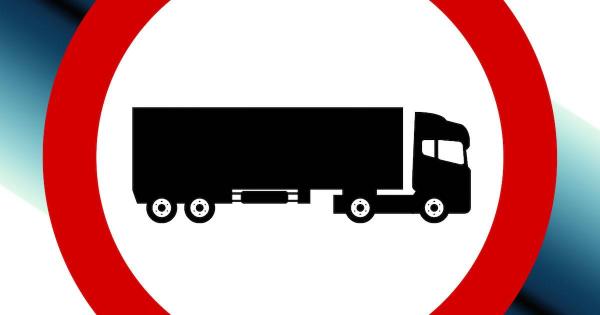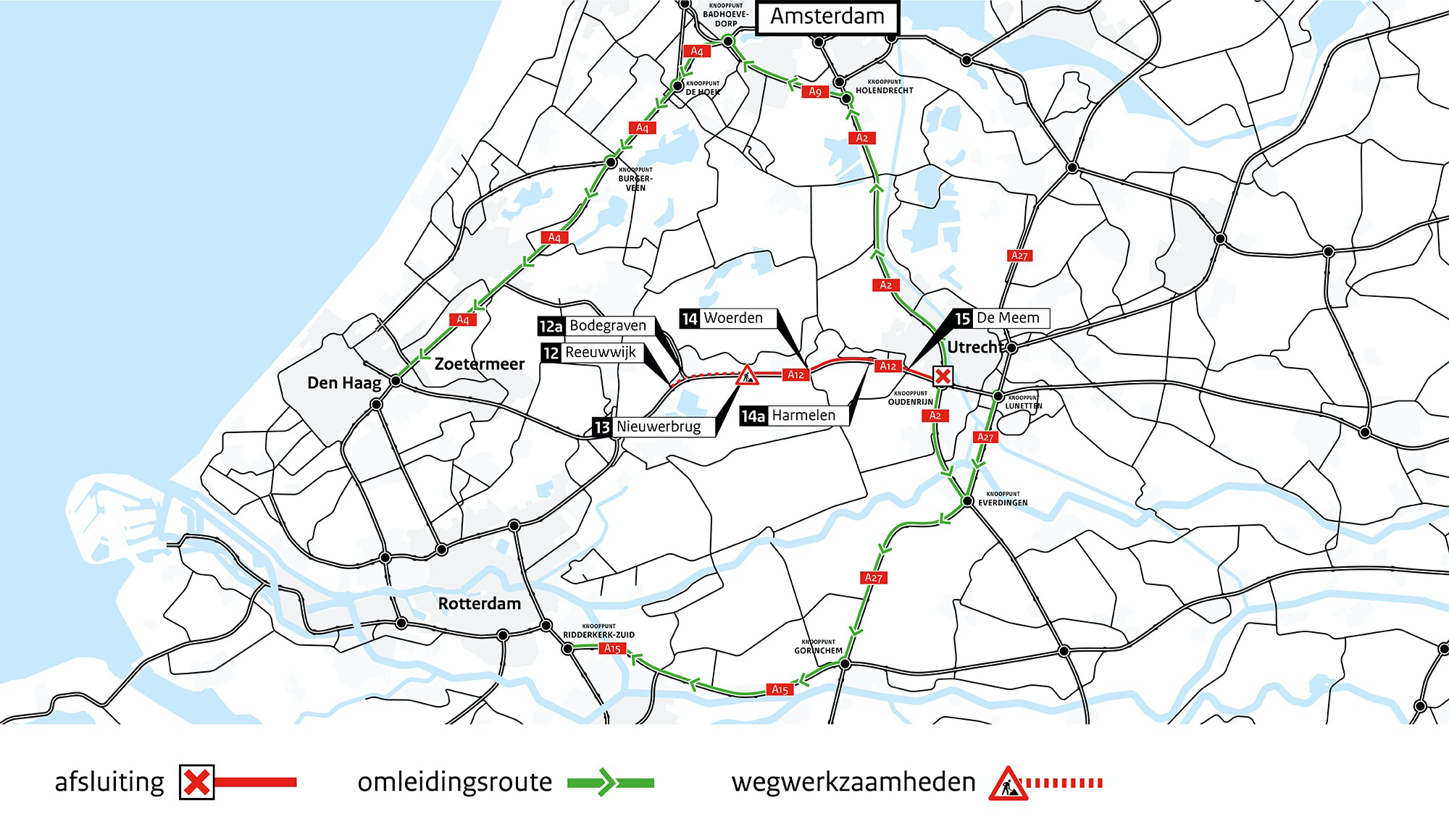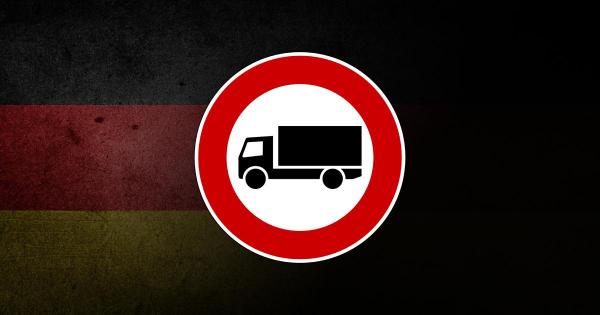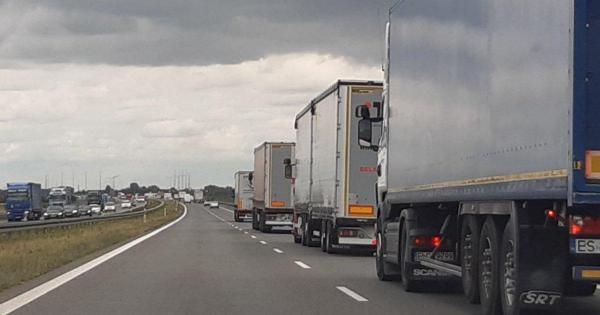
Katalonien führt obligatorische Nutzung der Autobahn AP-2 für Lastkraftwagen ein
Die Abschaffung der Maut auf den Autobahnen AP-7 und AP-2 ab Mittwoch, 1. September, die eine Folge des Auslaufens beider Konzessionen ist, war eine Gelegenheit für die katalanischen Behörden, den Geltungsbereich der im September 2018 in Kraft getretenen Lkw-Verkehrsbeschränkungen in den Provinzen Tarragona, Lleida und Barcelona zu erweitern.
Aufgrund des Lkw-Fahrverbots auf den Nationalstraßen N-340 und N-232 müssen Lkw-Fahrer die mautpflichtigen Autobahnen AP-7 und AP-2 benutzen. Ein ähnliches Verbot gilt seit 2013 für die Provinz Girona.
Zum 1. September hat die katalanische Verkehrsbehörde den Abschnitt der N-240 in der Provinz Lleida verlängert, der vom Fahrverbot für Lastkraftwagen mit 4 oder mehr Achsen betroffen ist. Derzeit gilt das Fahrverbot für den Abschnitt von KP 87, 4, in Lleida, bis KP 36.5, in Montblanc. In der Praxis müssen LKWs also ab der Ausfahrt Variante Sur aus Lleida (Ausfahrt 5) die Autobahn AP-2 entlangfahren, wenn sie in Richtung Katalonien fahren, und nicht, wie zuvor festgelegt, von Borges Blanques aus.
Ausgenommen sind Fahrten bei denen sich der Abgangs- oder der Bestimmungsort der Güter in den vom Fahrverbot betroffenen Gemeinden befindet.

France – new regulations for winter equipment from 1st November
France has introduced new regulations regarding the use of winter tires and the obligation of carrying snow chains in vehicles during winter months.
From 1st of November all vehicles have to be fitted with different winter equipment in the period from November 1 to March 31, depending on vehicle type, when driving in the following mountainous regions.
• the Alps
• Corsica
• the Massif Central
• the Jura Mountains
• the Pyrenees
• the Vosges
Regulations for heavy goods vehicles from 3.5 t GVW (N2, N3):
• HGVs without a trailer or semitrailer have to be equipped with at least 2 snow chains (or comparable, removable anti-slip equipment) or
• be fitted with at least 4 winter tires, which must be fitted on at least 2 wheels on the steering axle and on at least 2 wheels on the drive axle. If the vehicle has more than 1 steering axle, winter tires have to be fitted on all wheels.
• HGVS pulling a trailer or semitrailer have to be equipped with anti-slip equipment (snow chains or similar equipment).
Acceptable equipment:
• Anti-slip equipment such as snow chains and textile snow socks
• Winter tires: From November 1, 2024, only winter tires with the 3PMSF (3 Peak Mountain Snow Flake) symbol will be allowed. Until November 1, 2024, the use of winter tires with the “M + S” marking is also allowed.
New traffic signs:
France has introduced new road signs that accompany the new regulation. The road sign B58 indicates the general obligation to carry winter equipment in certain zones when entering the zone. The sign B59 indicates the end of a zone where vehicles are obliged to carry winter equipment.
Furthermore, the existing traffic sign B26 will also be used in the future to indicate the obligation of using snow chains owing to winter conditions.

Zusätzliche Lkw-Beschränkungen in Katalonien
An allen Sonntagen im September gilt ein neues Lkw-Fahrverbot.
Um Staus durch den Wegfall der Mautgebühren auf der Autobahn AP7 zu vermeiden, haben die katalanischen Behörden einen Beschluss veröffentlicht, der die Nutzung von Fahrzeugen mit einem zulässigen Gesamtgewicht von mehr als 7,5 t auf der AP7 untersagt. Das Fahrverbot gilt in beide Richtungen vom Kilometerpunkt (KP) 84,5 in Maçanet de la Selva bis zum KP 281 in l´Hospitalet de l´Infant, jeden Sonntag im September ab 17:00 Uhr. bis 22:00 Uhr. Vom Verbot ausgenommen sind, unter anderem, temperaturgeführte Transporten (Details finden Sie HIER).

Additional HGV restrictions in Catalonia
The HGV ban will be in effect on all Sundays in September.
In order to avoid traffic jams caused by the termination of tolls on the AP7 motorway, the Catalan authorities have published a resolution prohibiting the use of vehicles with a GVW of more than 7,5 t on AP7. The ban is in effect in both directions from kilometric point (KP) 84.5 in Maçanet de la Selva, to KP 281 in l´Hospitalet de l´Infant, every Sunday in September from 5:00 p.m. to 10:00 p.m. Vehicles carrying temperature-controlled goods, among other categories, are exempt from the ban (details can be found HERE).

Serious disruptions expected due to the closure of A12 in the direction of the Hague
Traffic dsruptions can be expected on the A12 near Utrecht in the directions of the Hague, between the junctions Oudenrijn and Reeuwijk, from 9:00 p.m. on September 27 until 5:00 a.m. on October 7. During this period the A12 between the junctions Oudenrijn and Nieuwerbrug will be completely closed.
The closure is due to urgent maintenance work. The following are diversions have been organised:
• vehicles from Utrecht bound for the Hague should travel via A2, A9 and A4.
• Rotterdam can be reached via the A2, A27 and A15 motorways.

$( document ).ready(function(){$(‘.ImageEnlarge’).mouseover(function() {$(‘.ui.modal’).modal(‘show’);});});


Schwere Beeinträchtigungen durch Sperrung der A12 in Richtung Den Haag zu erwarten
Am 27. September bis 5.00 Uhr am 7. Oktober auf der A12 bei Utrecht in Richtung Den Haag, zwischen den Anschlussstellen Oudenrijn und Reeuwijk, ist ab 21:00 Uhr mit Verkehrsbehinderungen zu rechnen. In dieser Zeit wird die A12 zwischen den Anschlussstellen Oudenrijn und Nieuwerbrug komplett gesperrt.
Die Schließung erfolgt aufgrund dringender Wartungsarbeiten. Folgende Umleitungen wurden organisiert:
• Fahrzeuge aus Utrecht in Richtung Den Haag sollten über die A2, A9 und A4 fahren.
• Rotterdam ist über die Autobahnen A2, A27 und A15 erreichbar.

$( document ).ready(function(){$(‘.ImageEnlarge’).mouseover(function() {$(‘.ui.modal’).modal(‘show’);});});


Ausnahmeregelungen wegen der Unwetterkatastrophe: Sonn- und Feiertagsfahrverbot, FerReiseV vom Samstagsfahrverbot sowie Lenk-und Ruhezeiten
Die Ausnahmeregelungen gelten für Beförderungen, die unmittelbar oder mittelbar im Zusammenhang mit der Hilfeleistung und Folgenbeseitigung der Unwetterschäden sowie der damit verbundenen Versorgung der Bevölkerung stehen sowie Leerfahrten in direktem Zusammenhang mit diesen Transporten.
– Baden-Württemberg (bis einschließlich 28. November 2021),
– Bayern (bis einschließlich 28. November 2021),
– Brandenburg (bis einschließlich 28. November 2021),
– Hessen (bis einschließlich 28. November 2021),
– Mecklenburg-Vorpommern (bis einschließlich 26. September 2021),
– Niedersachsen (bis einschließlich 31. August 2021),
– Nordrhein-Westfalen (bis einschließlich 30. November 2021)
– Rheinland-Pfalz (bis einschließlich 28. November 2021),
– Saarland (bis einschließlich 28. November 2021),
– Sachsen (bis einschließlich 15. August 2021) und
– Schleswig-Holstein (bis einschließlich 15. August 2021)
– Thüringen (bis einschließlich 28. November 2021).
In Bremen und Hamburg wird bis auf weiteres von dem Vollzug der genannten Fahrverbote abgesehen.
Ausnahmen zu Lenk-und Ruhezeiten
Für Beförderungen im Zusammenhang mit der Hilfeleistung und Folgenbeseitigung der aktuellen Unwetterschäden gelten folgende Ausnahmeregelungen bis zum 30.09.2021.
– Die tägliche Lenkzeit darf fünfmal in der Woche auf 10 Stunden verlängert werden
– Die wöchentliche Lenkzeit darf 59 Stunden nicht überschreiten
– Es ist zulässig, zwei aufeinanderfolgende reduzierte wöchentliche Ruhezeiten einzulegen, sofern der Fahrer in vier jeweils aufeinanderfolgenden Wochen mindestens vier wöchentliche Ruhezeiten einlegt, von denen mindestens zwei regelmäßige wöchentliche Ruhezeiten sein müssen. Jede Reduzierung der wöchentlichen Ruhezeit ist durch eine gleichwertige Ruhepause auszugleichen, die ohne Unterbrechung vor dem Ende der dritten Woche nach der betreffenden Woche zu nehmen ist. Wurden zwei reduzierte wöchentliche Ruhezeiten nacheinander eingelegt, ist die nächste Ruhezeit – als Ausgleich für diese zwei reduzierten wöchentlichen Ruhezeiten – vor der darauffolgenden wöchentlichen Ruhezeit einzulegen.
Dabei ist zu beachten, dass eine Ausnahme ausschließlich unter der Voraussetzung in Anspruch genommen werden darf, dass durch deren Inanspruchnahme die Verkehrssicherheit nicht beeinträchtigt wird.
BAG

Germany: exceptions to the HGV driving ban due to floods have been prolonged
The following German lands have prolonged a general exception from the driving ban on Sundays and public holidays (SoFv) and the Saturday driving ban set out in the Vacation Travel Ordinance (FerReiseV)
Exceptions apply to transports that are directly or indirectly related to the provision of assistance and elimination of the effects of damage caused by floods, as well as empty journeys directly related to these transports.
Exceptions apply to transports that are directly or indirectly related to the provision of assistance and elimination of the effects of damage caused by floods, as well as empty journeys directly related to these transports.
• Baden-Württemberg (until November 28 inclusive),
• Bavaria (until November 28 inclusive),
• Brandenburg (until November 28 inclusive),
• Hesse (until November 28 inclusive),
• Mecklenburg-Vorpommern (until November 30 inclusive),
• Lower Saxony (up to and including August 31),
• North Rhine-Westphalia (up to and including August 31)
• Rhineland-Palatinate (up to and including November 28).
• Saarland (until November 28 inclusive),
In Bremen and Hamburg, the above-mentioned driving bans will not be enforced until further notice.
Relaxations of the rules concerning driving and rest periods remain unchanged, i.e. they are in effect until September 30 this year.
The following relaxations have been introduced:
• the daily driving time may be extended to a maximum of 10 hours five times a week at the most
• the weekly driving time must not exceed 59 hours
• A driver can take two consecutive reduced weekly rest periods, provided that at least four weekly rest periods are taken in four consecutive weeks, of at least two must be regular weekly rest periods. Any reduction in the weekly rest period must be compensated for by an equivalent rest period, which must be taken without interruption before the end of the third week following the week in question. If two reduced weekly rest periods have been taken one after the other, the next rest period – to compensate for these two reduced weekly rest periods – must be taken before the following weekly rest period.
BAG

Temporary relaxation of the enforcement of the retained EU drivers’ hours rules
In response to requests from industry the Department for Transport (DfT) has, pursuant to Article 14(1) of the retained EU Drivers Hours Regulation, gained the approval of the Secretary of State for Transport to extend the temporary relaxation of the enforcement of the retained EU drivers’ hours rules in England, Scotland and Wales, due to the continued pressures on local and national supply chains.
The extension of the temporary relaxation of the rules reflects the exceptional circumstances arising from the cumulative impacts of the coronavirus (COVID-19) pandemic, an acute shortage of drivers of heavy goods vehicles and unusual fuel buying patterns, which adversely affect the carriage of goods by road, causing acute supply chain pressures.
Who the relaxation applies to
Anyone driving in Great Britain (GB) under the retained EU drivers’ hours rules and undertaking carriage of goods by road can use this relaxation where necessary. The relaxation is not limited to specific sectors or journeys.
Drivers’ hours rules are an important road safety measure and any deviation from the rules must be a last resort when other means of mitigating a situation have failed. Therefore, the temporary relaxation to the drivers’ hours rules must only be used where necessary by drivers and transport operators.
Conditions
The temporary relaxation to the drivers’ hours rules must not be used if any one of these 3 conditions is not met.
1. Evidence of detriment to wider community
Proof that there is a significant risk of a threat to human and/or animal welfare or a failure of a particular supply chain that will have a serious impact on essential public services must be provided.
Transport operators must obtain, to their satisfaction, confirmation from their customers that such a risk exists and that the customer is unlikely to be able to resolve the risk in other ways.
In the context of the transportation of food, fuel and medicines, this would include avoiding the risk of acute shortages at retail outlets that would be readily apparent to consumers.
In respect of these sectors and essential public services, detrimental factors can include losses of production that would lead to shortages. However, shortages at retail outlets are not a justification in respect of many types of goods, such as domestic building supplies, clothing or supplies to eat-in or takeaway food and drink.
2. Evidence that a relaxation would lead to a significant improvement in the situation
This includes evidence that the risk is unlikely to be resolved without using the relaxation.
3. Driver safety must not be compromised
Operators and self-employed drivers must assess the risks of using the temporary relaxation and implement suitable control measures and/or mitigations, so that the safety of the driver, other road users and those involved in loading and unloading is not compromised.
Transport managers should make sure that a risk assessment has been carried out and appropriate controls put in place. They should also continue to monitor and review where necessary as long as the relaxation is used.
It is important to consider the risk of fatigue and the effect of the relaxation on shift patterns. For example, if the relaxation related to daily driving time has been used, it should not be followed by a reduced daily rest period and should be used in the context of stable start times for shifts.
Information about fatigue and shift work is available.
It should be noted that the temporary relaxation has been brought in primarily to add reliability and resilience to duty rosters, as opposed to extra scheduling of deliveries.
It is also essential that use of the relaxation is agreed genuinely with drivers involved, including in the light of a driver’s specific circumstances.
Drivers continue to be bound by the Road Transport (Working Time) Regulations 2005. This legally limits the amount of working time (including driving) a driver can do in any given week to a maximum of 60 hours, with an average of 48 hours a week calculated over a rolling 17- to 26-week period.
If you are concerned that a driver or the vehicle operator is breaking the drivers’ hours rules, (including the terms of this temporary relaxation) or the working time regulations, this should be reported to the Driver and Vehicle Standards Agency (DVSA).
It is permitted for a driver using this relaxation to drive outside GB during the period of this relaxation. However, this relaxation only covers driving undertaken within GB.
Relaxation of EU drivers’ hours rules
The retained EU drivers’ hours rules can be temporarily relaxed as follows.
Either
– the daily driving limit can be increased from 9 hours to 10 hours up to 4 times in a week (instead of the normal permitted increase to 10 hours twice a week) – all other daily driving limits remain at 9 hours
OR
– replacement of the requirement to take at least 2 weekly rest periods including at least one regular weekly rest period of at least 45 hours in a 2-week period, with an alternative permissible pattern of weekly rest periods as specified below, and an increase to the fortnightly driving limit from 90 hours to 99 hours
Alternative pattern of weekly rest periods
The alternative pattern of weekly rest periods for drivers using the relaxation related to weekly rest periods is as follows:
– a regular weekly rest period is not required in a 2-week period provided 2 reduced weekly rest periods of at least 24 hours are taken
– following this, and by the end of the next 2 weeks, 2 regular weekly rest periods must be taken. However, any reduction in weekly rest shall be compensated for in the normal way by an equivalent period of rest taken before the end of the third week following the week in question
– in addition, any rest taken as compensation for a reduced weekly rest period shall be attached to a regular weekly rest period of at least 45 hours (which can be split over 2 regular weekly rest periods).
This relaxation must not be used in combination with existing rules for international driving, which allow for 2 consecutive reduced weekly rest breaks in certain circumstances.
It is not recommended that this relaxation be used for drivers engaged partly in international journeys.
All other drivers’ hours rules remain in force unchanged, including the requirement for drivers to take a break period of at least 45 minutes after driving for 4 hours 30 minutes.
Timing of the relaxation
This temporary relaxation will apply from 12:01am on 4 October 2021 and will run until 11:59pm on 31 October 2021.
Any reduced weekly rest periods taken before 4 October 2021 must be taken into account and compensated for in the normal way before using the alternative weekly rest period permitted under this relaxation.
If any reduced weekly rest periods are taken in the 2 weeks prior to the end of the relaxation period (31 October 2021), compensatory rest must still be taken as described.
DfT reserves the right to withdraw the relaxation earlier, or extend the relaxation, if circumstances change.
Using the relaxation
The practical implementation of the temporary relaxation should be through agreement between employers and employees and driver representatives.
Operators must notify the DfT if this relaxation is used by completing:
1. An initial notification of relaxation form (until 31 October 2021) and emailing a copy to [email protected].
If you have already notified DfT about the use of the relaxation in operation up to 3 October, you must still complete and submit this form if you intend to make use of the relaxation during the period up until 31 October.
2. A follow-up notification of relaxation form (until 31 October 2021), which must be emailed to [email protected] one week after the end of the period of relaxation and by 7 November 2021 at the latest.
Failure to comply with the requirement to notify the DfT would be an indication to enforcement authorities that the relaxation had been used inappropriately and follow-up investigatory action may occur.
In addition, when driving under the EU drivers’ hours rules, drivers must note on the back of their tachograph charts or printouts the reasons why they are exceeding the normally permitted limits. This is usual practice in emergencies and is essential for enforcement purposes.
The temporary relaxation must be used only where necessary. Otherwise, the normal drivers’ hours rules should be followed.
DfT encourages operators facing high work demands or work absences to take urgent measures to secure drivers who have limited or no current work.
Driver safety must not be compromised. Drivers should not be expected to drive while tired. Employers remain responsible for the health and safety of their employees and other road users.
As a general rule, we expect business to plan for and manage the risks of disruption to supply chains.
Please note that relaxations in relation to transport undertaken solely in the territory of Northern Ireland are a matter for the devolved authority.
gov.uk

Catalonia: HGV driving ban replaced with an overtaking ban for HGVs
The termination of tolls on the AP-7 and AP-2 motorways from Wednesday, September 1, following the end of both concessions, was used by the Catalan authorities as an opportunity to extend the scope of HGV restrictions that came into force in September 2018 in the provinces of Tarragona, Lleida and Barcelona.
After tolls on the AP-7 motorway were terminated on September 1, the Catalan Transit Directorate (SCT) introduced an HGV driving ban on the motorway which was in effect every Sunday in September to counteract traffic jams.
Since the start of October, the HGV driving ban on the AP-7 motorway has been lifted, as it did not bring the expected results. Therefore, the SCT decided to replace it with a surprising new measure, allowing trucks to use the motorway on Sunday afternoons. However, they can only drive on the right lane of the motorway, at a maximum speed of 80 km/h and without the possibility of overtaking.
The new regulation will apply every Sunday until the end of 2021 from 3 p.m. to 10 p.m. on the motorway section of about 160 km from 55 KP (Girona) to 216 PK (El Vendrell) in both directions.